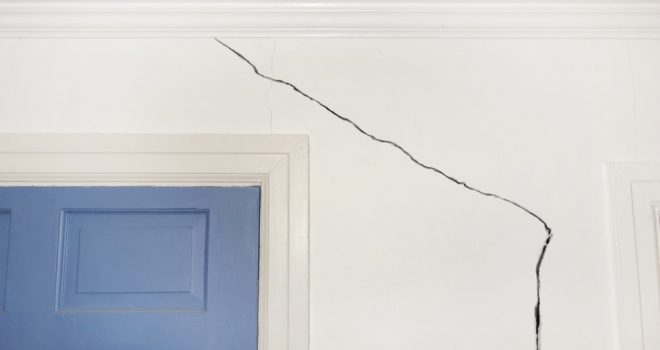
"If you think your home has a subsidence issue, reach out to your insurer, as they will put you in touch with the appropriate contacts"
A new report by Go.Compare Home Insurance has revealed that home insurance quotes with a history of subsidence claims have risen by 299% within the space of nine years.
The comparison site reviewed the number of home insurance quotes with previous subsidence claims it received during the second halves of 2013 and 2022, and found that the figure has dramatically increased.
The number rose by an average of 85% per year during this time, including a 72% increase since 2017, suggesting a surge in subsidence claims over the last decade. This follows a year of record-breaking temperatures in the UK, with warmer weather being a major cause of subsidence.
However, data from the last couple of years provides some optimism, as figures from 2021 and 2022 indicate that growth may be slowing. The number grew by just 3% from 2021, well below the 85% average for the last nine years.
What is subsidence?
Subsidence is where the ground beneath a building sinks and pulls the foundations down with it. This causes cracks to appear in the building’s walls and floors. Eventually, the property may start to lean to one side and may become structurally unsound.
How to spot subsidence
Check the property for cracks. Cracks caused by subsidence may be found in inner and outer walls. They can appear and spread quickly, be thinner at one end, run diagonally, and be found around windows and doors.
Other signs of subsidence include sloping floors, wallpaper wrinkles, as well as doors and windows not closing or opening properly.
Is subsidence covered by home insurance?
Subsidence is covered by most house insurance policies, but only if the property has never suffered from subsidence in the past. A good buildings insurance policy should cover repairs to damage caused by subsidence, as well as replacement costs for lost items and alternative accommodation.
What to do if a home has subsidence?
Those who think their home may have subsidence should contact their insurer as soon as possible. They will likely put you in touch with a surveyor or a structural engineer to confirm if the cracks are a result of subsidence. Once the problem has been diagnosed, the necessary work to correct the issue will need to be carried out by the appropriate specialist.
Ceri McMillan, a home insurance expert at Go.Compare, said: “Our latest data seems to indicate that the UK has experienced a substantial subsidence surge over the past decade or so. While figures from the last couple of years suggest this might be slowing, you should still monitor your property for signs of subsidence, as the warmer summer temperatures will inevitably bring a spike in cases.
“There are also several things you can do to prevent the chances of subsidence happening to your property. Try to maintain your home’s drains and keep on top of any vegetation that’s close to the property, as these can both cause subsidence if not properly managed. If you think your home has a subsidence issue, reach out to your insurer, as they will put you in touch with the appropriate contacts.”





